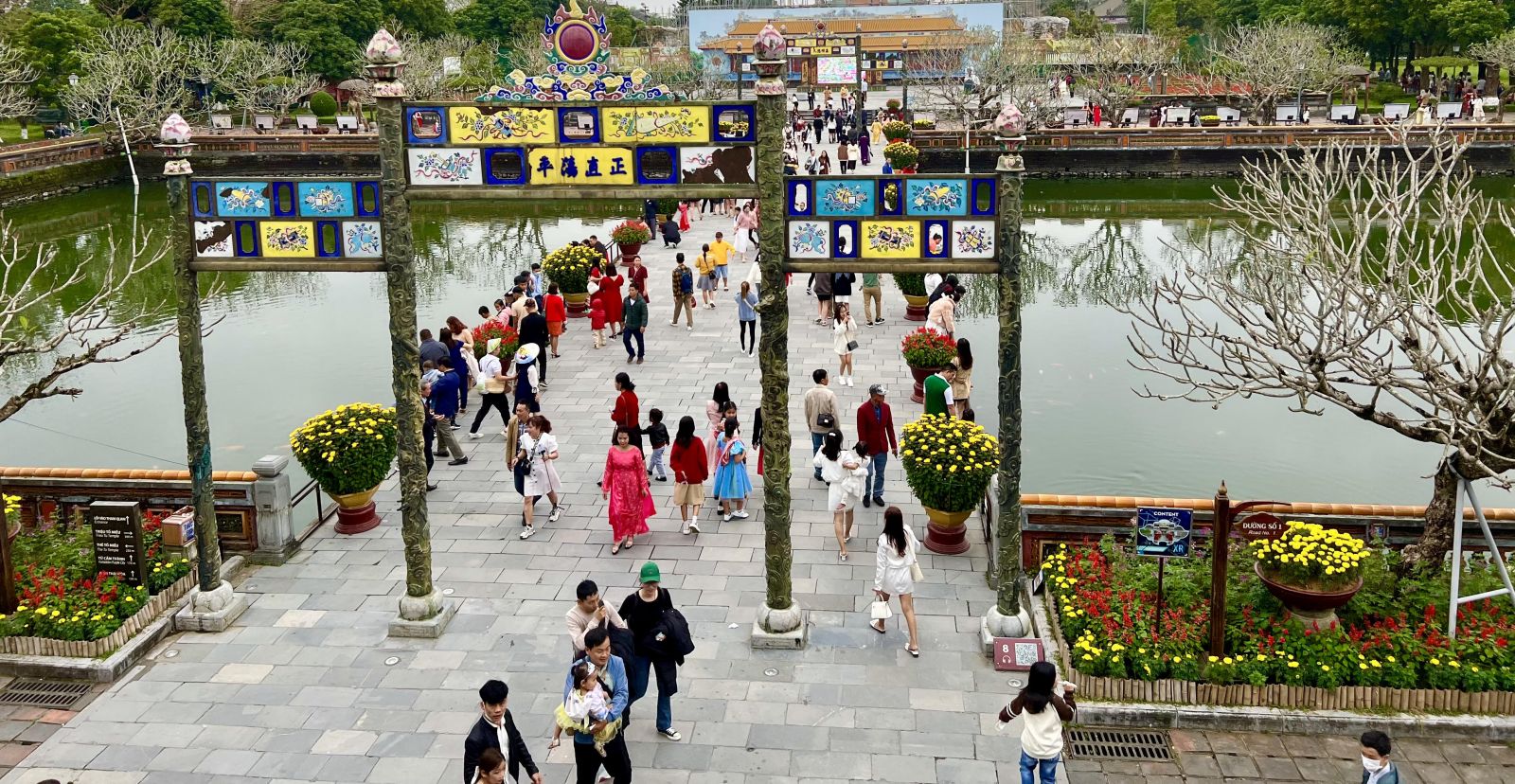
Hue Imperial Citadel is one part of the Complex of Monuments of the Ancient Capital, which is recognized by UNESCO as a World Cultural Heritage on December 11, 1993.
In an interview with the Vietnam News Agency’s reporter (VNA) on the occasion of the Lunar New Year of the Cat 2023, Mr. Christian Manhart shared that one of Vietnam's competitive advantages in tourism was from its rich and unique culture and nature.
“Vietnam currently owns 8 World Heritage Sites and 14 Intangible Cultural Heritages, which shows the great potential of this country,” emphasized Mr. Manhart.
“Vietnam is very successful in connecting tangible and intangible heritage. One example, which is also one of my favorite experiences, was the Ao Dai Festival in the last April at Yen Tu. I was so lucky to be at this event and wore a traditional Vietnam’s Ao Dai with an imprinted World Heritage logo. Ao Dai is a candidate on the Intangible Heritage List, and Yen Tu is working hard to be recognized by UNESCO as a World Heritage Site,” said the head of UNESCO in Vietnam.
Mr. Manhart believed another advantage was that the Government of Vietnam is well aware of the value of culture and heritage, as a driving force for socio-economic development. Vietnam has made great efforts to promote culture-based tourism and preserve its cultural and natural sites.
The UNESCO’s Representative suggested Vietnam to develop new creative and sustainable tourism products that reflect its unique cultural traditions and practices.
“It is helpful to put the local community at the heart of tourism management. The community is the main attraction and also the main beneficiary, that plays a leading role in tourism management to promote the protection of intangible cultural heritage, as well as improving their living and working conditions,” suggested Mr. Manhart.
Mr. Manhart emphasized the importance of a comprehensive strength of public-private initiatives, as well as the promotion of community engagement for a better partnership.
As for him, it is necessary to have more capacity-building programs to improve the quality of human resources for tourism, develop community-centered tourism initiatives, simplify tourist visa procedures, and lengthen the tourist visa from the current one-month period.
“This will help attract foreign tourists to visit less popular areas and provide benefits in terms of income, employment and business opportunities,” explained Mr. Manhart.
Regarding the Cham pottery art being inscribed on UNESCO's List of Intangible Cultural Heritage in Need of Urgent Protection, Mr. Manhart noted that this art form was endangered due to the impact of the urbanization process on the community, the shortage of raw materials, the untimely adaption to the market economy, as well as the lack of attention of the younger generation.
“The good thing is that the Cham pottery villages have been protected by the Government and local authorities with the issuance of many decisions on the protection and development of craft villages. This art is also inscribed on the National Intangible Cultural Heritage List,” said UNESCO Vietnam Representative.
He advised that Vietnam and other countries with heritages listed by UNESCO on the Representative List of Intangible Cultural Heritage of Humanity, should invest resources in conservation and create a favorable environment for community to practice, develop and preserve their intangible heritage.
Mr. Manhart affirmed that UNESCO was ready for ongoing provision of technical assistance to preserve intangible heritages in Vietnam, and pledged that the organization would continue to work closely with central and local authorities, private sectors, social organizations and local communities to promote education, science, culture and communication for the sustainable development of the country.
Source: VNA
